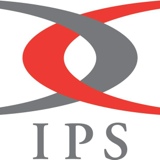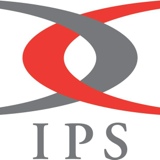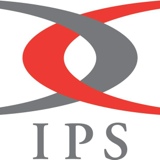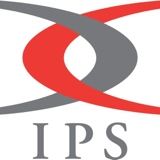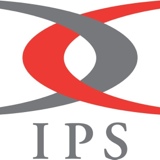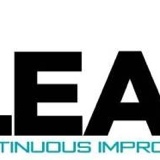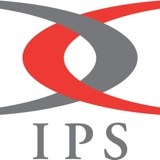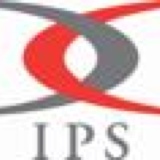Information
-
Audit Title
-
Client / Site
-
Conducted on
-
Prepared by
-
Location
-
Personnel
1.0-Pre-Job Safety Meeting
-
1.1 JSA Complete and signed by all employees on location? Standard: API RP 54 6.1.7
-
1.2 Job Hazards Identified? Standard: API RP 54 6.1.7
-
1.3 Responsibilities outlined and understood? Standard: IPS Standard
-
1.4 Restricted work area identified? Standard: 29 CFR 1910.1200(f)(5-6)
-
1.5 Emergency plan in place and understood by all employees? Standard: OSHA 29 CFR 1910.38.(b)
-
1.6 Evacuation / All clear alarm identified? Standard: OSHA CFR 1910.38(d)
-
1.7 Mentor assigned to SSE's? Standard: API RP 54.6.1.7
-
1.8 SIMOPS coordinated through company man? Standard: API RP 54.6.1.7
-
1.9 All persons sign in/out when entering/exiting location? Standard: OSHA CFR 1910.38(c)(4)
-
1.10 All personnel using designated smoking area? Standard: API RP 54.1.2-3, OSHA 29 CFR 1910.145(c)(2)(i)
-
1.11 Safety briefing/muster area designated? Standard: OSHA 29 CFR 1910.38(c)(4)
-
1.12 At least 2 people on location trained in CPR/First Aid? Standard:API RP 54 4.3.1, OSHA 29 CFR 1910.151(b)
-
1.13 Are 2 people on location trained in well control? Standard: API RP 54 6.4.4, 20 AAC 25.527
-
1.14 Personnel H2S Awareness Trained? Standard: API RP 49 5.1
-
Comments:
2.0 Mandatory Safety Equipment
-
2.1 FRC's Properly worn by all employees? (zipped up and sleeves rolled down) Standard: OSHA 29 CFR 1910.132, NFPA 2113
-
2.2 Hard Hats (Plastic no metal) being worn by all employees? Standard: API RP 54 5.2.1, OSHA 29 CFR 1910.135(a)(1-2)
-
2.3 Safety Glasses - All employees Standard: API RP 54 5.2.2, OSHA 29 CFR 1910.135(a)(1-5)
-
2.4 Safety boots - All employees Standard: API RP 54 5.2.3, OSHA 29 CFR 1910.136(a)
-
2.5 Gloves - All employees Standard: OSHA 29 CFR 1910.132(a)
-
2.6 Hearing protection available? Standard: OSHA 29 CFR 1910.95
-
2.7 Fall arrest system ( inspected and labels readable) Standard: OSHA 29 CFR 1910.66 App C(f), ANZI Z359.5 1.2
-
2.8 Lanyards ( inspected and labels readable) Standard: OSHA 29 CFR 1910.66 App C(f), ANZI Z359.5 1.2
-
2.9 Hard hat and safety glasses available for visitors Standard: OSHA 29 CFR 1910 132(a)
-
Comments:
3.0 Rig Up - General / Wellhead
-
3.1 Spotter used when backing equipment. Standard: IPS Standard
-
3.2 20# Fire extinguisher located at left front bumper of each pice of equipment. Standard: API RP 54 7.2.4 & 5
-
3.3 Is Fall arrest system used while working in aerial lift? Standard: OSHA 29 CFR 1926.453(b)(2)(v)
-
3.4 Is Fall arrest system used from heights greater than 4 ft? Standard: OSHA 29 CFR 1910.453(b)(2)(v)
-
3.5 Do Personnel using forklifts and aerial lifts have current certification cards? Standard: OSHA 29 CFR 1910.178(i) & 1926.453(b)(2)(ii)
-
3.6 Was an inspection done before use on Forklift? Standard: OSHA 29 CFR 1910.178(p)(7), API RPB56.6 6.5.1-2
-
3.7 Is seat belt used while operating forklift? Standard: API RP B 56.1 5.3.19
-
3.8 Are ropes used on hammer wrenches? Standard: IPS Standard
-
3.9 Are endless loops used to secure iron? (Ribs & Spine) Standard: IPS Standard
-
3.10 Are lubricators permanently marked with a serial #? Standard: API RP 54 13.6.5C
-
3.11 Are Lubricator Certifications current? Standard: API RP 54 13.6.2
-
3.12 BOP's Tested? Standard: API 54 6.4.1
-
3.13 Are all bolts in place in all flanges? Standard: API RP 54 6.4.1
-
3.14 Is caution tape put up around all High Pressure and crane working area? Standard:API RP 54 16.1.10
-
3.15 Are all persons not involved in Pressure testing standing outside the taped off area? Standard: API RP 54 16.1.10
-
Comments:
4.0 Rig Up (CT Unit)
-
4.1 CT unit placed up wind of the well head? Standard: API RP 49 11.6.1, API RP 68 12.7.1
-
4.2 Are steps leading to doghouse Secure,Level, Have hand rails with keeper pins in place? Standard: OSHA 29 CFR 1910.23 ,29 & 1910.36
-
4.3 Are all railings in place and keeper pins in place? Standard: OSHA 29 CFR 1910.23(c)(1)
-
4.4 Are all Hydraulic lines in good condition and without leaks? Standard: IPS Standard
-
4.5 Are all pins and keepers in reel saddle? Standard: IPS Standard
-
4.6 Only necessary personnel in area when rigging up. Standard: IPS Standard
-
4.7 Is the injector gooseneck pinned? Standard: IPS Standard
-
4.8 Is there a field safety guide in the CT doghouse? Standard: IPS Standard
-
4.9 Are emergency phone numbers filled out and posted? Standard: API RP 54 4.2.1 - 49 7.6-7 - 54 7.7-8
-
4.10 Current MSDS book? Standard: OSHA 29 CFR 19101200(g)(1), API RP 54 6.1.12
-
4.11 Current emergency response plan. Standard: IPS Standard
-
4.12 Firs Aid Kit stocked and has a bloodborne pathogen kit. Standard: OSHA 29 CFR1910.151(b), API RP 54 4.3.2
-
4.13 Fire extinguisher Monthly & Annual inspection current? Standard: OSHA 29 CFR 1910.157(e)(1), 1910.157(e)(2)
-
4.14 House Keeping practices used? Standard: OSHA 29 CFR 1910.22(a)(1), 1910.141(a)(3)
-
4.15 Are drip pans, duck ponds or oil absorbent pads being used for leaks? EPA Standard
-
Comments:
5.0 Rig Up (N2 Pump)
-
5.1 Iron certification current? Standard: API RP 54 12.5.1
-
5.2 Hammer unions in good shape and not mushroomed. APIRP 54 12.5.1
-
5.2 Are steps leading to doghouse Secure,Level, Have hand rails with keeper pins in place? Standard: OSHA 29 CFR 1910.23 ,29 & 1910.36
-
5.3 N2 PPE being used? (eye and face protection and Proper gloves) Standard: Osha 29 CFR 1910.133(a)(1) - 1910 138(a)
-
5.4 Are drip pans, duck ponds or oil absorbent pads being used for leaks? EPA Standard
-
Comments:
6.0 Rig Up (Fluid Pump)
-
6.1 Are steps leading to doghouse Secure,Level, Have hand rails with keeper pins in place? Standard: OSHA 29 CFR 1910.23 ,29 & 1910.36
-
6.2 Iron certification current? Standard: API RP 54 12.5.1
-
6.3 Hammer unions in goos shape and not mushroomed. APIRP 54 12.5.1
-
6.4 All chemicals labeled and MSDS's on location. Standard: OSHA 29 CFR 1910.1200(b)(1)
-
6.5 All bagged materials stacked properly? Standard: OSHA 29 CFR 1910.176(b)
-
6.6 Assessment for respirator conducted? Standard: OSHA 29 CFR 1910.134(b)(1-3), API RP 54 5.4.1
-
6.7 Personnel wearing proper PPE per MSDS? Standard: OSHA 29 CFR 1910.1200(B)(1)
-
6.8 Are drip pans, duck ponds or oil absorbent pads being used for leaks? EPA Standard
-
Comments:
7.0 Rig Up (Crane)
-
7.1 Lifting slings inspected and labels readable. Standard: OSHA 29 CFR 1910.184 - 1910.112(b)
-
7.2 Chains inspected and tagged Grade 8 or better. Standard: OSHA 29 CFR 1910.112(c) - 1910.184
-
7.3 Tag-lines inspected and used when lifting. Standard: OSHA 29 CFR 1910.180 (h)(3)(vi), API RP 54 6.2.12
-
7.4 Only one person signaling crane operator. Industry Standard
-
7.5 Outriggers fully extended and approved pads under them. Standard: OSHA 29 CFR 1910.180(h)(3)(i)(a)
-
7.6 Outrigger Floats secured with pad pins. Standard: OSHA 29 CFR 1910.180(h)(3)(iv)
-
7.7 Cones or CAUTION tape designating the cranes swing path. Standard: OSHA 29 CFR 1910.180(h)(3)(iii)[b]
-
7.8 Hydraulic system has no apparent leaks. Standard: OSHA 29 CFR 1910.180(d)(3)(iv)
-
7.9 Air system has no audible leaks. Standard: OSHA 29 CFR 1910.180(d)(3)(iv)
-
7.10 Boom exhibits no damage to structure.(wear pads, boom, stops, or cylinders) Standard: OSHA 29 CFR 1910.180(h)(3)(ix)
-
7.11 Wire rope free of dirt, excess lube, kinks, and spooled properly. Standard: OSHA 29 CFR 1910.180(g)
-
7.12 Block in good condition and greased. Standard: Per Manufacture
-
7.13 No damage to the hook and it swivels freely. Standard: OSHA 29 CFR 1910.180(d)(3)(v)
-
7.14 All guards in place. Standard: OSHA29 CFR 1910. 212(a)(1)
-
7.15 All hand rails in place, secured and not damaged. OSHA 29 CFR 1910.21(f)(10)
-
7.16 Cab glass free of cracks and wipers working properly. Standard: Per Manufacture.
-
7.17 Anti-two block in place and functioning. Standard: OSHA 29 CFR 1910.180(b)(3)(iii)
-
7.18 All lights and horn working properly. Standard: OSHA 29 CFR 1910.180(b)(3)(iii)
-
7.19 Fire extinguisher monthly / annual current. Standard: OSHA 29 CFR 1910.157(e)(1) & (e)(2), 1910.180(i)(5)(i) API RP 54 16.1.10
-
7.20 Daily crane inspection filled out. Standard: OSHA 29 CFR 1910.180(d)(2)(i)
-
7.20 Annual inspection current. Standard: OSHA 29 CFR1910.180(d)(2)(ii)
-
7.21 Operators manual in cab. Standard: Per Manufacture
-
7.22 Load chart legible and visible to operator. Standard: OSHA 29 CFR 1910.180(c)(2)
-
7.23 Hand signal chart visible to workers. Industry Standard
-
7.24 Hand held wind sped indicator available. Industry Standard
-
7.25 Are drip pans, duck ponds or oil absorbent pads being used for leaks? EPA Standard
-
Comments:
8.0 Job Execution
-
8.1 Supervisor / PIC Identified and in Control? Standard: IPS Standard
-
8.2 Do employees work as a team? Standard: IPS Standard
-
8.3 Was there NO equipment failures?
-
8.4 Are regular checks of equipment done? Standard: API RP 54 8.3.3
-
8.5 Are tools in good working order? API RP 54 6.8.6
-
8.6 NO homemade tools on location. Industry Standard
-
8.7 General housekeeping Standard: OSHA 29 CFR 1910.22(a)(1), API RP 54 6.5.1
-
8.8 Fluid leaks on equipment contained EPA Standard
-
8.9 Spill Kit Easily accessible Standard: IPS Standard
-
8.10 Spill containment in place.
-
8.11 Safety Procedures Followed.
-
Comments:
9.0 Outside Of Equipment.
-
9.1 Is Equipment clean? Standard: IPS Standard
-
9.2 Fuel Tanks (Caps, Straps, Mounts) in place and in good condition. Standard: API RP 54 8.3.3
-
9.3 Fuel, hydraulic, and other tanks properly labeled. Standard: OSHA 29 CFR 1910.1200(f)(5)
-
9.4 All Belts, Chains, and rotating parts have guards in place. Standard: OSHA 29 CFR 1910.212(a)(2), API RP 54 .8.2-3
-
9.5 All hoses on equipment in good condition. Standard: OSHA 29 CFR 1910.5(a)(1)
-
9.6 At least one axle on each piece of equipment chocked. Standard: API RP 54 11.1.2
-
9.7 Trailer plugs, wires, chains in good condition and no damage. Standard: DOT
-
9.8 Break away cables on light duty trailers connected and working properly. Standard: DOT
-
9.9 Tool / parts boxes uncluttered and lids are able to close and lock.
-
9.10 All loose items on trailers are able to be secured.
-
Comments:
10.0 Post Job
-
10.1 Is area policed and all trash picked up? Standard: IPS Standard
-
10.2 Are all spills cleaned up before leaving location? Standard: IPS Standard
-
10.3 Location Clean after equipment is removed from location? Standard IPS Standard
-
10.4 Are Drivers Logs current? Standard: DOT & IPS Standard
-
10.5 Has journey management been conducted? Standard: IPS Standard
-
Comments :
-
Supervisor Signature
-
Auditors Signature








